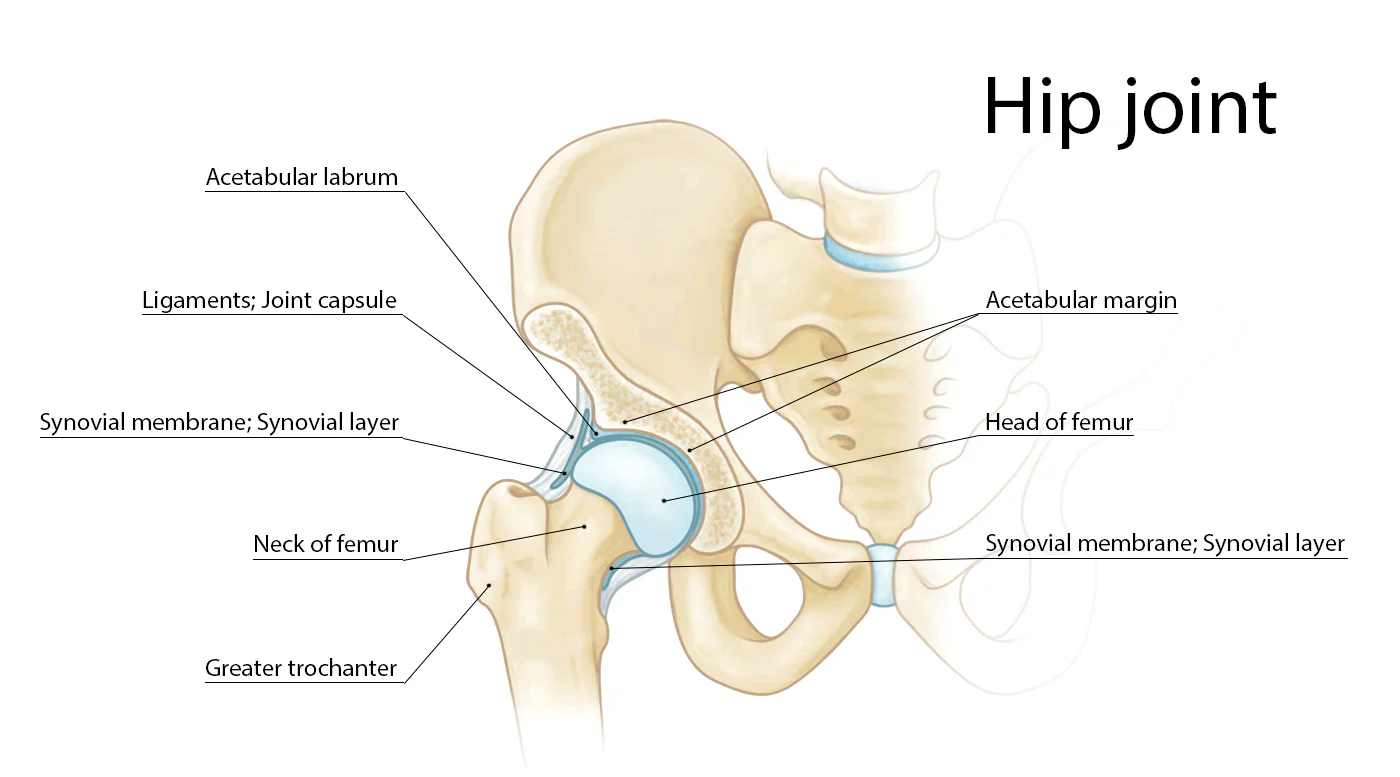
Understanding Hip Labral Tears: Causes, Symptoms, and Treatment
In last week’s post, we finished discussing the most common tears we see associated with the knees. Today we will continue this conversation with the hip joint. The hip is not usually associated with ligament tears, but there is one structure that we sometimes see injured or torn in the hip – the labrum. This post will highlight how someone could get a labral tear, the associated symptoms, and generally how recovery/rehabilitation works.
What Is the Hip Labrum?
The hip labrum is a ring of fibrocartilage that surrounds the outer edge of the acetabulum (the socket part of your hip joint). It acts as a cushion and a seal for the hip joint, helping to deepen the socket for added stability. The labrum also aids in smooth pain-free joint function and shock absorption during movement. When the labrum is torn, it can lead to mechanical issues, instability, and pain.
Causes of Hip Labral Tears
Hip labral tears can result from a variety of causes; typical examples can include:
Trauma: Sudden injuries from falls, sports collisions, or car accidents
Repetitive Motion: Repetitive twisting, pivoting can lead to labral injuries over time
Structural Abnormalities: Conditions that cause bony abnormalities in the hip can increase friction and compression on the labrum
Degeneration: As we age, our cartilage wears down. This can affect the hip labrum, particularly in individuals with hip osteoarthritis
|
Symptoms of a Hip Labral Tear |
Diagnosing a Labral Tear |
|
Persistent deep groin or anterior hip pain Pain that worsens with activities (specifically twisting, pivoting or fast walking) Clicking, locking or catching sensation when moving the hip Stiffness and/or decreased range of motion |
Typically performed by a detailed medical history and physical examination of the hip Imaging tests such as a MRI with contrast (MR arthrogram) is the gold standard for diagnosing hip labral tears |
Treatment Options
As we have discussed with most tears, the treatment depends on the severity of the tear, your activity level, and your overall health. Hip labral tears are mostly treated conservatively with rest, activity modification, physical therapy to regain ROM, strength and overall function. For pain management some individuals may discuss anti-inflammatory medications with their doctors to reduce pain and inflammation. If symptoms persist or there is a more severe injury, surgery may be indicated. Recovery after surgery typically involves physical therapy and a gradual return to activity over several months.
Conclusion
Hip labral tears are more common than many people realize — especially among athletes and active individuals. Fortunately, with the right diagnosis and a tailored treatment plan, most people can recover fully and return to doing what they love. If you’re experiencing unexplained hip pain, consult with one of the physiotherapists at Kamloops Physiotherapy & Sports Injury Centre, as they can guide you through a specific, individualized rehabilitation program that will improve your chances of a full recovery.
This blog post was written by physiotherapist Jacob Coelho. To book an appointment with Jacob or one of our other experienced therapists, call 250-314-0788.
